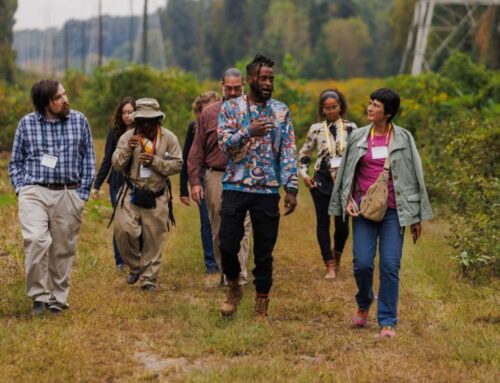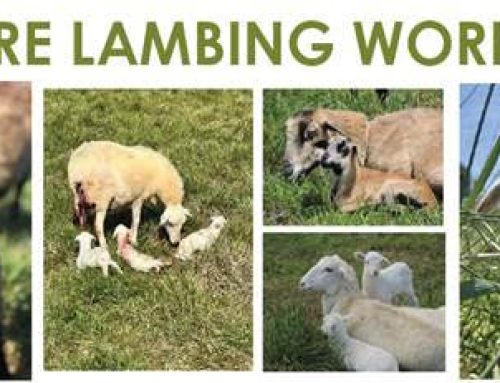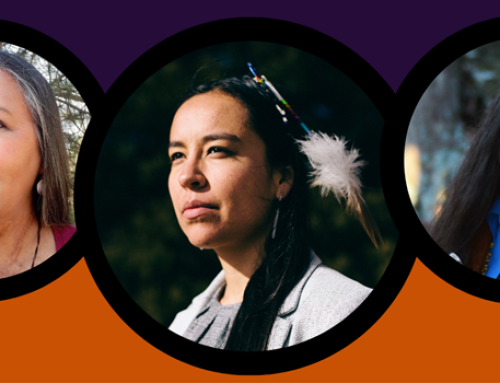Good morning Forest Update Subscribers,
According to the National Woodland Owner Survey, most people (including my family) own land for wildlife. The specific purposes vary, depending on the owners, but typically include creating habitat for hunting and/or viewing wildlife. And the reality is, by creating habitat, we also create opportunities for negative wildlife interactions. And we have been having quite a few of these this year.
First, in March, the tractor wouldn’t start. Turns out, mice had established a nest in the housing around the wire harness and had chewed through all but 1 of the wires. The replacement wire harness cost between $800-1500. Fortunately, my husband John is not only cheap, but also clever, and was able to build a new wire harness for under $20.
Second, for the first time ever, I was successfully growing carrots in the greenhouse. The tops were lush, and the roots were growing fast. I thought the combination of chicken wire, thick plastic wrap, and an electric line had successfully stumped the rodent who historically snuck in and eaten all the tops. Until last week. Now the tops are mostly eaten, and I feel discouraged and sad.
Finally, for a couple of years we’ve known we have a bear (Zed). The clues were obvious – trash cans tossed about (one went missing for years), and trash bags torn open. We foiled him (for a few years) by building a heavy wood box to hold the cans. But last week, we were woken up two nights in a row by a strange noise. John looked out the bedroom window and was face to face with old Zed himself – tearing apart the wood box. He (Zed, not John) also ate most of a jug of slug bait I had left on the porch – never considering that any animal other than a slug would want it.
So, what can we all do to live harmoniously alongside wildlife? For the most part, the answer is that humans need to change their behavior. Because wildlife are just that – wild – and just trying to make a living. Fortunately, there are a lot of simple things we can do (that don’t involve killing the problem animal) to reduce conflict with the critters we share our land with. For a list, visit Help with Human-Wildlife Conflicts | Virginia DWR. And if you are having a conflict you cannot live with or resolve on your own, you can call the Wildlife Conflict Hotline at 1-855-571-9003.
What are we doing to improve our relationship with the local fauna? For now, further fortifying the greenhouse, reinforcing our trash can receptacle, putting an electric line around our blueberry bushes (last year old Zed ate most of them), and planting lots of wildlife and pollinator friendly species for them to enjoy. As far as the tractor is concerned, perhaps we’ll work on increasing our blacksnake population to keep the mouse population in check. I’ll post some of the photos of Zed’s work on the VFLEP Facebook page.
We have a number of landowner education programs coming up. Check out the Calendar of Events for a complete listing. Below are some featured events.
- Fifteen Minutes in the Forest videos are shown every other Friday.
- Join us live every other Friday at 12:15 on Facebook or on ZOOM
- Save the Dates Flier
- June 10 – Red Imported Fire Ants
- June 24 – Tree ID Beyond the Basics
- Summer Break – we’ll return on August 26th
- Watch archived on our YouTube Channel
From Flames to Forests: Past, Present, and Future Fires for Sustaining our Forests and Wildlife
There is growing awareness and attention given to wildfires worldwide as we see increasingly devastating fire seasons impacting our forests and communities in frightening ways. A changing climate coupled with a century of fire suppression and an ever-increasing wildland urban interface are resulting in the “perfect storm” for catastrophic fire conditions.
Despite these challenges, fire is still gaining momentum as a management tool, and a solution, in curbing these catastrophic events while simultaneously promoting forest health and wildlife diversity. Join us as we explore the long relationships between fire, forests, and wildlife and how we can usher in a future of more prescribed fire on the land for healthier ecosystems and more resilient communities.
- June 7
- 11 – 1:45
- Online
- Free – reserve your spot here
Our Retreats are hosted by the Virginia Department of Forestry and Virginia Cooperative Extension. They are geared towards landowners who are new to forest management, provide information on both hardwood and pine forests, offer chances for interaction with natural resource professionals from various agencies in Virginia, as well as with other landowners, provide information on estate planning, management planning and certification, and provide hands-on experience with tree identification, forestry equipment, and more.
- September 9-10
- New Kent Conference Center, Providence Forge
- Registration opens in June
Join the Generation NEXT Team and experienced conservation, legal, and financial advisors to learn how to pass your land on to the next generation while keeping it intact, in forest, and in family. Registration opens 6 weeks prior to each event.
- Central Virginia
- August 26 & 27
- South Boston
- Registration opens in June
- Southwest
- Oct. 27
- All day
- Matthews State Forest, Galax
- Southeast
- November 2
- 6-9:00 p.m.
- New Kent Forestry Center, Providence Forge
- Virtual
- Sept. 8, 9, 14, & 15
Teaching Trees
This is a 16-hour professional development workshop for middle and high school teachers. In this fun and unique two-day workshop, teachers receive training in Project Learning Tree, take a tour of local working forests, and practice field activities they can use with students. Topics include sustainable local forestry, tree identification, forest ecology, and forest products. For more information, contact Ellen Powell at 434-975-0475 or ellen.powell@dof.virginia.gov.
- July 13-14
- Louisa/Albemarle Counties
- $50 – includes lunches and overnight accommodations
- Register online



